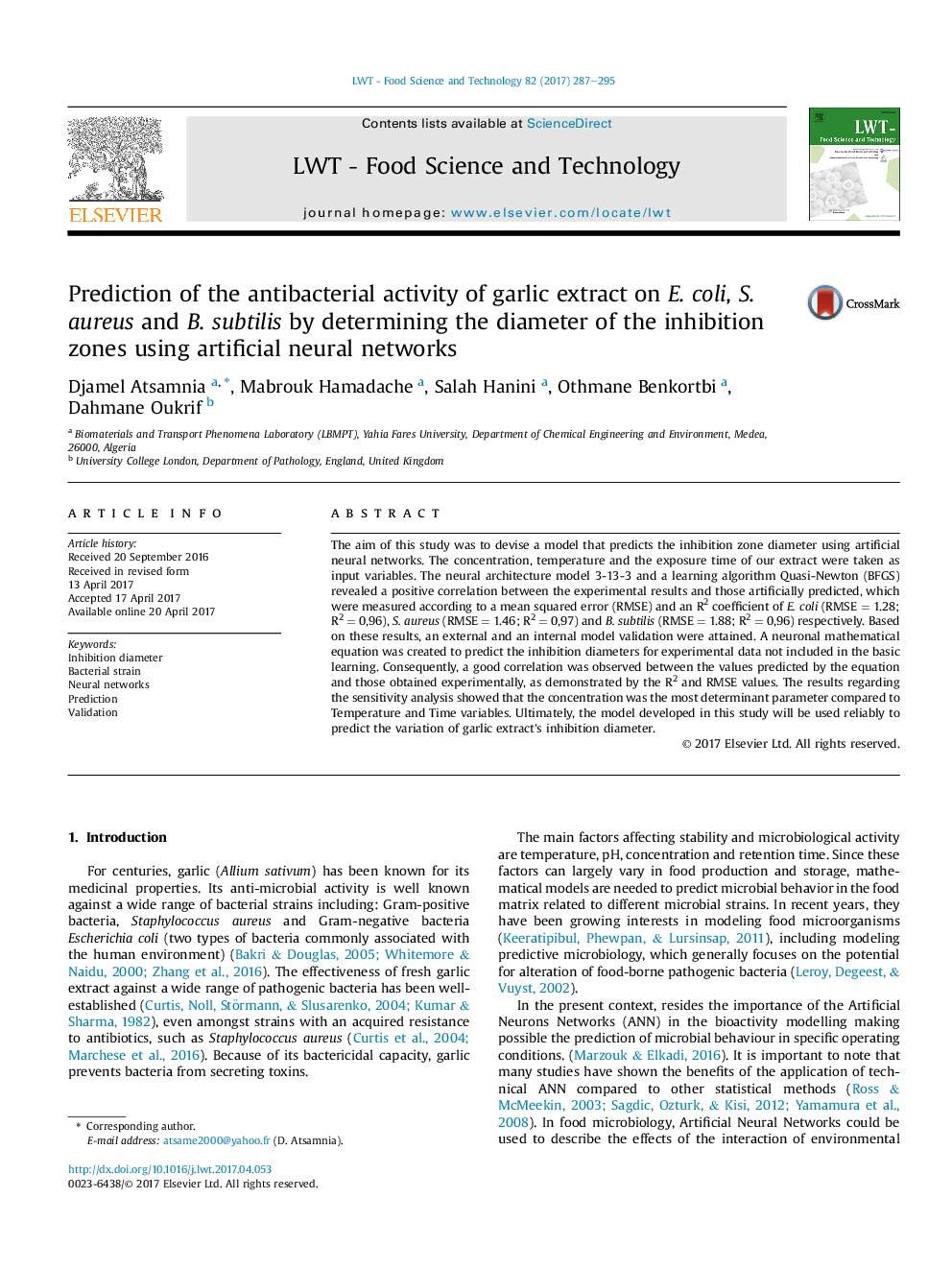| Article ID | Journal | Published Year | Pages | File Type |
|---|---|---|---|---|
| 5769174 | LWT - Food Science and Technology | 2017 | 9 Pages |
â¢Experimental assessment of antibacterial properties of garlic extract at different temperatures.â¢Establishment of a neuronal model to predict the diameter of the inhibition zones of garlic extract.â¢A development of a mathematical equation to validate the model by a series of experimental values.
The aim of this study was to devise a model that predicts the inhibition zone diameter using artificial neural networks. The concentration, temperature and the exposure time of our extract were taken as input variables. The neural architecture model 3-13-3 and a learning algorithm Quasi-Newton (BFGS) revealed a positive correlation between the experimental results and those artificially predicted, which were measured according to a mean squared error (RMSE) and an R2 coefficient of E. coli (RMSE = 1.28; R2 = 0,96), S. aureus (RMSE = 1.46; R2 = 0,97) and B. subtilis (RMSE = 1.88; R2 = 0,96) respectively. Based on these results, an external and an internal model validation were attained. A neuronal mathematical equation was created to predict the inhibition diameters for experimental data not included in the basic learning. Consequently, a good correlation was observed between the values predicted by the equation and those obtained experimentally, as demonstrated by the R2 and RMSE values. The results regarding the sensitivity analysis showed that the concentration was the most determinant parameter compared to Temperature and Time variables. Ultimately, the model developed in this study will be used reliably to predict the variation of garlic extract's inhibition diameter.
